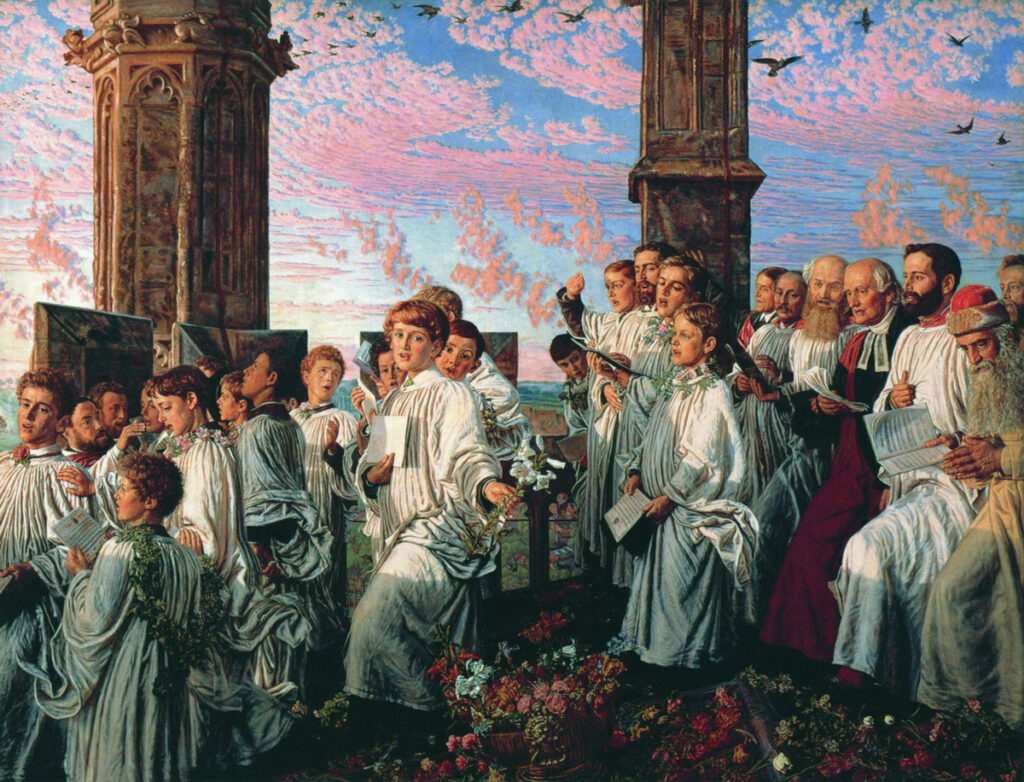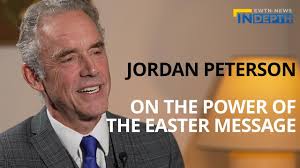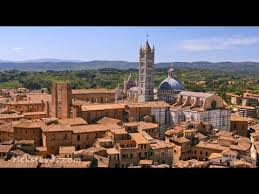This is a column about the future. But it begins with the past. I’ll explain.
I turn 75 in October. As birthdays go, this is a Big One. My wife Suann and I are both blessed with good health, so mortality still feels like a tedious but remote obligation. . .though a lot less remote than a decade ago. People die; all of us. In your 70s, consciously or otherwise, you start to take an inventory of what you’ve seen and learned; what, if anything, you’ve accomplished; what your life has meant.
And so, for the past several years, I’ve wandered back to 1 Peter 1:24-25 more frequently:
All flesh is like grass
and all its glory like the flower of grass.
The grass withers and the flower falls,
but the word of the Lord abides forever.
It sounds like a passage tailor-made for a wallow in melancholy. But I’ve found that it’s the opposite. The money line is the last one: the word of the Lord abides forever. Forever is a big word. It gets you thinking about time. And thinking about time, at least in my case, leads to thinking about history; what I owe to the lives of others, now gone; and how our own lives, today, shape the course of the future.
I grew up with an Irish Catholic mother who had a very keen sense of history and a distinct dislike of the English. By “English” she meant Oliver Cromwell. She had an ironclad memory of Protestant repression in Catholic Ireland. Her family there, from Galway and Longford, had been dirt poor and a notch above starving.
To survive, they emigrated to America during the Great Famine of 1845-52, and Britain was never a welcome subject around the table, with one exception: the Catholic martyrs. She had a lifelong devotion to Thomas More, John Fisher, Edmund Campion, and the many other saints judicially murdered by Henry VIII and “Good Queen Bess.”
Her memory was a bit fuzzier when it came to “Bloody Mary’s” burning of Protestants. But it was quite vivid again when speaking of pre-Tudor Catholic England, and especially the killing of Thomas Becket by friends of Henry II. As she often reminded her children, the Catholic Church was effectively banned and often hounded in England from Elizabeth I in the late 16th century onward. Restrictions were gradually eased and lifted only in the late 18th through mid-19th centuries.
All this flooded back to me earlier this month, thanks to the kindness of friends, on a pilgrimage to England’s Catholic sites. Modern pilgrimages can degrade into a kind of religious tourism, with participants consuming and forgetting history like yesterday’s snack. Not this one.

It’s impossible to visit London’s Tyburn convent – near the spot where martyrs were hanged until nearly dead, then disemboweled alive, and then quartered – without being moved. Likewise with the Tower cell where Thomas More was imprisoned, and the chapel where his bones were mixed with those of John Fisher and many other victims for interment.
Elsewhere, northwest of London, the city of Oxford saw the conversion of John Henry Newman in the 19th century. Thomas More spent two years at the University of Oxford, and in the last century, J.R.R. Tolkien (Catholic) taught there with C.S. Lewis (Anglican) and other members of The Inklings.
Addison’s Walk, where Tolkien and Hugo Dyson convinced Lewis to become a Christian, is on the grounds of Oxford’s Magdalen College, just a hundred or so yards from the window of a vacant student room where I stayed as a pilgrim; a room much like the one John Colet would have had during his own student days at Magdalen. A brilliant educator, priest, and friend of Thomas More and Erasmus, Colet delivered one of the greatest reforming homilies on the threshold of the Reformation.
The world beyond my window at Magdalen would surely have looked familiar to Colet: the same serene Magdalen College lawns stretching into the distance, an island of peace in a world of unrest.
But I said this column is about the future. So, to it, I’ll now turn.
One of England’s pockets of surviving, underground Catholic faith during and after the Reformation was the county of Lancashire, well outside the orbit of both London and Oxford. The recusants – those who refused to comply with Protestant worship – played a long, evasive, ambiguous game with the authorities. As a result, the faith never entirely disappeared. When the Church was once again allowed to breathe, Stonyhurst College in Lancashire became a national center of Catholic education for young men, and now women.
Stonyhurst (where Tolkien also once taught and the “Tolkien Trail” still exists) has a legacy stretching back 430 years to locations on the European continent. But the future belongs not just to the students formed at Stonyhurst, but even more so to the broader adult community of Catholic leaders who can and will be formed in the coming years at the Christian Heritage Centre and Theodore House, located on Stonyhurst’s grounds.
CHC/Theodore House is a superb conference and education facility led by director Stefan Kaminski with zeal and skill. The Church has urged us toward a “new evangelization” since John Paul II first coined the phrase. CHC/Theodore House is a place where those words actually matter; where the work can actually begin. And that’s a source of hope.
I suppose what I mean is this: The world beyond the window of our lives as Christians is a long line of ordinary souls in an extraordinary story; a story of salvation stretching back into history and on into the future toward a loving God, all of us with unique, irreplaceable moments in the tale. And looking back on my own life – and all our lives – what a privilege it is to be part of that story, and a solace. . .because:
The grass withers and the flower falls,
but the word of the Lord abides forever.
__________















